What Is Full Stack Software Development? Frontend to Backend
If you’ve ever wondered how websites or apps go from concept to reality, the answer often lies in full-stack software development. It’s a term we hear more frequently in today’s tech-driven world. But what is full-stack software development?

As someone who’s worked closely with development teams and seen projects evolve from wireframes to fully developed applications, I can tell you this: understanding the full stack isn’t just for developers. Whether you’re a business owner, project manager, or tech enthusiast, knowing how things work from the frontend to the backend can be a real game-changer.
What Is Full Stack Software Development?
In simple terms, full stack software development is the process of working on both the frontend (what users see) and the backend (what runs in the background) of a web application.
A full stack developer is like a multi-skilled craftsman. They are comfortable designing the user interface and equally at ease managing the server, database, and logic behind it.
The Frontend: Where Users Interact
The frontend is what users see and use. This includes buttons, forms, images, layouts, and overall design. It’s all about structure, visuals, and user experience.
Technologies commonly used:
- HTML for structure.
- CSS for styling
- JavaScript for interaction
- Frameworks like React, Vue, or Angular for building dynamic interfaces
A good frontend focuses on clarity, responsiveness, and ease of use
The Frontend: Where Users Interact
The frontend is what users see and use. This includes buttons, forms, images, layouts, and overall design. It’s all about structure, visuals, and user experience.
Tools and technologies include:
- Server-side languages like Node.js, PHP, Python, and Java.
- Databases such as MySQL, PostgreSQL,and MongoDB.
- Frameworks like Django, Laravel, and Express.js
The backend ensures that every action on the frontend works as expected.
The Full Stack: One Developer, Complete Perspective
A full stack developer understands both ends. They can build applications from scratch, troubleshoot issues across different layers, and collaborate with various team members to ensure a cohesive product.
They don’t need to be experts in every single technology, but should know how each part connects and functions as a whole.
Why Full Stack Developers Stand Out
Versatility
They work across the entire application, switching between frontend and backend tasks as needed.
Problem Solving
They understand how changes in one layer can impact the others and can resolve complex issues effectively.
Adaptability
Technology evolves quickly. Full stack developers keep up and adjust to new tools and frameworks.
Collaboration
Even if they can work solo, they often team up with designers, testers, and engineers to build efficient, scalable products.
Real-World Relevance
Having a full stack mindset improves how teams work. Even specialists benefit from understanding how the other side functions.
For businesses, working with full stack developers often results in:
- Faster project delivery
- More efficient communication
- Better product cohesion
- Reduced development costs
Common Full Stack Tech Stacks
| Tech Stack | Frontend | Backend | Database |
| MERN | React | Node.js, Express. js | MongoDB |
| MEAN | Angular.js | Node.js, Express. js | MongoDB |
| Laravel Full Stack | HTML/CSS | PHP, Laravel | MySQL |
| Python Full Stack | HTML/CSS | Python, Django | PostgreSQL |
Choosing the right stack depends on the project’s goals, performance requirements, and the development team’s experience.
Final Thoughts
So, what is full stack software development? It’s the end-to-end process of creating a web application—from how it looks to how it works. Full stack developers combine design thinking, coding expertise, and problem-solving skills to build functional, scalable digital products.
Whether you’re planning your next project or considering a tech career, understanding what full stack software development means will help you make smarter decisions. Aryu Academy helps you master both frontend and backend skills through practical, job-ready full stack training.

Subscribe to Our Newsletter!
Get The Latest News, Updates, And Amazing Offers
Popular Posts

Oct 13, 2025
How to Make a WordPress Site: A Step-by-Step Guide

Oct 3, 2025
JavaScript vs TypeScript: Which is better for developers?

Sep 23, 2025
Data Analytics Using Python: A Complete Beginner’s Guide











